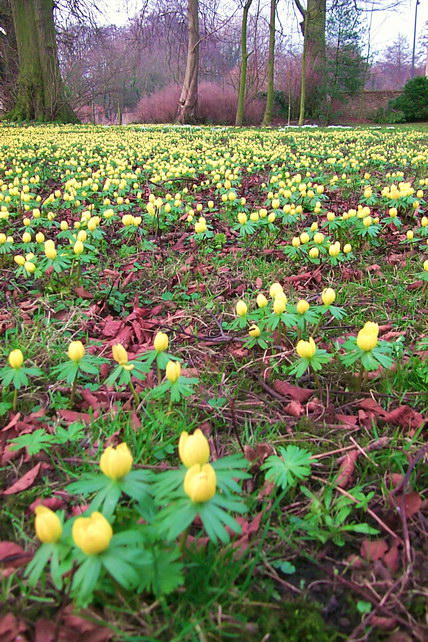
In the early 90's, I was working on a project to upgrade major lengths of a dual carriageway to motorway standard. This was led by highway engineers, with landscape consultants playing a major part. At one point, a viaduct carried the existing dual carriageway over a valley.
This valley was (and still is) very high quality habitat. Most of it is a Yorkshire Wildlife Trust Reserve, and parts of it are designated as SSSI (Site of Special Scientific Interest) for ecological value. The only way to carry a motorway across this valley was going to be to use the existing dual carriageway viaduct as the north-bound carriageway of the motorway, and create a new south-bound viaduct beside it.
Huge amounts of work were done on assessing the design options for the new viaduct, including how to mitigate impacts on the woodland and meadow habitats below. One proposition was to collect rainwater from the carriageway, filter it and then release it under the new viaduct, to irrigate the habitats below. The aim would be to prevent the viaduct creating a drying rain-shadow, which would have killed off the meadow on the slopes below. The (then) Countryside Commission and Yorkshire Wildlife Trust were consulted, and we were starting to get somewhere in terms of a technical response to minimise impacts.
Then two things happened. First, the highways programme pretty much dried up, resulting in the abandonment of the project. But before we finished the project, we heard an interesting but depressing bit of news. A maintenance team had been required to survey and fix any problems found on the underside of the existing viaduct. Without any obligation to employ landscape or ecological consultants; without any consultation with wildlife bodies; and quite possibly without any awareness of what they were about to trample: they moved in, set up a compound and erected scaffolding on the valley floor and side slopes - in the area which we had been trying so hard to protect.
I don't suppose that the damage was terminal. To some extent, nature can bounce back, depending on the sensitivity of the habitat. But what struck me was the difference between our painstaking design, assessment and consultation process, and the maintenance team simply rolling up and getting started.
A year or two later, on the verge opposite my house in North Cave, Yorkshire Electricity laid an important under-ground cable. In doing so, they more or less destroyed a most beautiful display of snowdrops which covered the verge. Over ten years later, it is still not back to its former glory.
A couple of years after that, the public view of North Cave's most beautiful snowdrop and winter aconite display was lost, when the former Vicarage was sold. The new owner put a solid, high fence around the garden. I don't blame anyone for wanting privacy (although sometimes the need for privacy appears to verge on paranoia) - but his private gain was the community's public loss. The children, in the play area next door, would never again be able to marvel at that white and yellow carpet, that early declaration of Spring.
So how are these events connected? They are examples of the ways in which the shared and the valued landscape is degraded, subtly, and by degrees which mostly go unnoticed. These are not changes which are capable of being prevented by planning policy or statutory protection. They are not subject to Environmental Impact Assessment. They are far too small to even register on the development control radar. And yet, year upon year, they slowly reduce the visual and ecological diversity around us.
I don't really know what can be done about this. The big control mechanisms are far too coarse to pick it up, and I fear that we are moving towards landscapes which cannot sustain wildflowers, only coarse weeds; and which cannot sustain diverse mammals and birds, only survive-anywhere generalists, like rats and magpies. My hope is that education - not least in the form of some truly excellent TV by the likes of David Attenborough - will raise levels of awareness about what we have, and what we are losing. I also welcome the sterling work done by conservation groups, although the result can be isolated islands of diversity in a largely bland landscape, which is inherently unsustainable. To be fair, organisations like Yorkshire Wildlife Trust are trying to deal with these issues. They state: "We see the future of wildlife conservation as a Living Landscape - by identifying key areas to protect for wildlife, improving and joining them up across the county in partnership with other land-owners we can create an inspiring, accessible landscape which is full of wildlife and rich in opportunities for learning and sustainable economic development." This is a realistic and positive message.
Change is necessary and inevitable; and change control through the planning system is essential. But what I fear most is change which is not controlled at all - it just happens all around us. In the immortal words of Joni Mitchell, "Don't it always seem to go, that you don't know what you've got till it's gone".